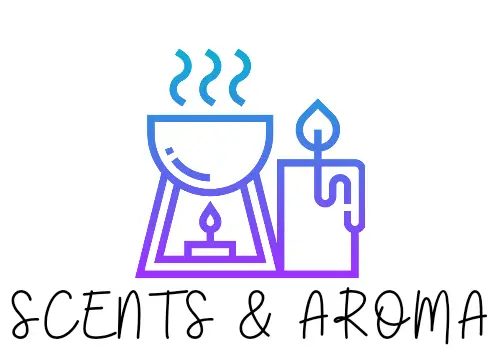If you love scented candles then Soy candles are great to gave in your home. Apart from providing light, scented soy candles can add ambiance to your home and give it a relaxing atmosphere.
At the same time, some candles are also known for releasing chemicals into the air – harmful chemicals.
When you burn candles such as paraffin wax candles, they release carcinogenic toxins like soot, acrolein, benzene, and formaldehyde into the air. As a result, most candles are known to affect air quality. But which particular candle is the culprit and which isn’t?
There are rumours circulating that Soy candles can actually clean the air around them as they burn. It is a well known fact that beeswax candles clean the air but is it the same for Soy wax?

let’s now take a look!
Do soy wax candles clean the air?
Soy candles don’t contaminate the air, however they also do not clean the air either. Soy candles burn cleanly and are a healthy alternative to paraffin candles. The wax is natural and safe. Also Since they burn slowly and cleanly, soy candles won’t affect the air quality around your home. Too say that they go as far as cleaning the air is false though.
For a candle to affect the air quality around your home, it must produce toxic chemicals. So, since soy candles burn cleanly, it is safe to say that they are safe to use at home. However, the soy candles don’t necessarily clean the air.
Which candles do clean the air?
Beeswax candles are the only candle type known to clean the air. When you burn the candles, it releases negative ions into the air to purify them just like an air purifier.
Common pollutants and allergens have a positive ion charge. When the beeswax candle releases negative ions, they bind to the positive ions and either burn or fall to the ground or get sucked into the candle. Either way, fewer allergens in the air means cleaner air.
Besides being non-toxic, beeswax is a naturally-occurring candle that gives off a hot flame. It also burns slowly and evenly, without smoke, soot, chemicals, or bioproducts. The candle also releases a natural honey fragrance.
Crashing waves, thunderstorms, running water, and similar movements produce negative ions, just like a beeswax candle does. These ions also boost serotonin levels and improve mood, anxiety, and depression. If you want to avoid air pollution, use candles with clean wax – For example, beeswax candles, soy candles, and coconut wax candles.
To learn more about all the benefits and negatives of different wax types check out this guide that I wrote.
Which candle is bad for air quality?
Paraffin candles. Did you expect that? We bet you did. Paraffin candles don’t clean the air. Rather, they pollute it.
Since its discovery, paraffin has been a crucial part of the candle-making industry. In fact, most candles contain a blend of paraffin. However, it is not a safe compound to inhale when it burns. This is because paraffin is a petroleum product and sits pretty high on the list of hydrocarbons.
During combustion, the candle produces soot that can affect the air quality and cause a health hazard. Besides releasing toxic emissions into the air, these toxins can linger for up to 10 hours after extinguishing the candles.
Paraffin candles also contain chemicals and additives included to make them burn and smell better. The daily use of this candle over the years has contributed to a number of health problems, especially in adults.
Major candle manufacturers such as Yankee candle still use paraffin wax in theor products. Read my article about if Yankee candles are safe for more information.
Can candles eliminate bad smells?
Yes, candles can get rid of bad smells and make your air feel purer. Scented candles cover unpleasant odor and can mask an unwanted smell. They can also pull gas into the flames and burn them. So, if you want, you can use a scented candle in your bathroom to cover an unwanted smell.
How to minimize candle issues?
Use proper wick size
To minimize candle use, you must cut the wick size to avoid tunneling or inconsistent flame. Cut the wick to ¼ inches before using your candle for the first time. Also, avoid thick wicks and those with a wire core. Your candle wick should burn down evenly with the wax and should be thin and braided. The wicks should also curl over when you burn them.
Use a large jar or container
Avoid using candles in containers with narrow mouth openings. This will increase flicker and cause unsteady air flow. You can either use a large jar or free-standing plates.
Ensure adequate ventilation
Don’t ever light a candle in an enclosed space. Instead, make sure your space is well-ventilated. Also, avoid drafts on your candles, and extinguish them an hour after a continuous burn and let the candle cool before relighting.
Try a candle warmer
Unlike open flames, candle warmers don’t need a flame. Instead, the warmer gently warms the wax so it does not emit chemicals, smoke, or soot.
How to improve air quality
Use humidifiers
Humidifiers make the air easy to breathe by putting moisture into the air. It also protects woods and will make your home feel warmer during the winter.
Use purifiers
Air purifiers ensure safe and healthy air by removing toxins. Although there are different types, they all remove pollutants from the air. For example, UV air purifiers neutralize pollutants and bacteria, while air exchangers replace unfiltered air with filtered air. Like beeswax, ionic air purifiers reverse the molecular electrical charge to create clean air.
Use HEPA filters
These filters prevent pollen, dander, smoke, dust mites, and other particles from getting into the air. However, always check the filters to make sure they don’t become clogged and dirty.
Conclusion
Soy candles are products of soybeans. This makes them a natural and safe alternative to paraffin. The candles are also biodegradable, renewable, and won’t produce. Plus, they don’t release any of the harmful pollutants paraffin candles give off.
Prolonged daily use of soy candles will ultimately produce a non-toxic white residue. However, the residue is easy to clean with warm and soapy water and won’t pose a health risk. Plus, there is a bonus if you are vegan.
Soy candles, beeswax candles, and coconut wax candles don’t contaminate or affect air quality. Therefore, you can use them rest assured of no health risk. However, you should stay off paraffin if you really desire a candle that cleans the air.
As a quick recap to the original question, Soy wax candles do not clean the air but they are a very green and safe candle option.
- Can You Put Perfume In A Humidifier? (Read First) - September 17, 2022
- Can You Put Essential Oil In A Steam Mop? (Safety Advice) - September 17, 2022
- How To Make Lavender Oil At Home ( Candles And Diffusers) - September 9, 2022
